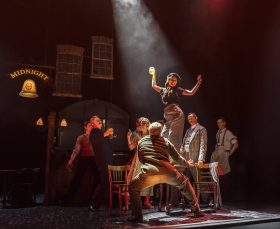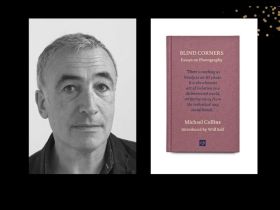COVID-19 dominated the headlines but underneath the cover of these big stories there were other stories for the arts about cuts, closures and some points of hope. Here are the most read stories of the year from ArtsHub.
10. Why Australia’s gallery system is so broken
Much was called into question this year – including traditional structures of power. Gina Fairley spoke to Brisbane gallerist Andrew Baker about what exactly is wrong with how our galleries work. As Baker sees it, the gallery system no longer supports artists with ‘80% of people earning a living in the sector [being] from publicly funded art institutions’. And our ‘public institutions import exhibitions rather than export them in a ration of roughly 10 to 1’. It was an idea that many shared on social media and wanted to explore more.
9. Queensland announces $8M relief fund for coronavirus arts emergency
Way back in March, Queensland that was one of the first states to respond with funding relief for the arts. And it wasn’t just a cash splash. The Queensland Government waived rental payments for arts tenants based in their buildings – allowing them to spend on artists. They also skipped the bureaucratic hassle of applying for another four years funding by greenlighting another year of funding for existing organisations (saving them the time to reapply in a difficult year).
Executive Director of La Boite Theatre Company Zohar Spatz was appreciative but cautious of the funding. She told ArtsHub, ‘the backbone of this industry rests with sole traders, small businesses and casuals. It’s not just performers, it’s production and tech crew, venue and hospo staff. That is the next step … how can we support individuals? How can we support freelancers? But certainly I’m deeply grateful.’
8. ‘I feel like I’ve been cheated’: proposed axing of Monash courses provokes dismay
In September, as many were saying lockdowns were softening and there was talk of venues opening up again, Monash University announced the closure of the Centre for Theatre and Performing Arts (CTP). It was a knock-on from universities not being given JobKeeper and felt like the latest attack in an ongoing war against the arts. As second year student Gemma Livingstone told ArtsHub, ‘I feel like I’ve been cheated because I signed up for something, and now it might not be here. I’m sad for anyone who comes underneath me, or who wanted to go to Monash where this might not be possible for them in the future.’
7. Sector in shock as Australia Council 4-year funding announced
It came as no surprise that 4-year funding saw a drop in 4-year funding and many saw it as an extension of the 2015 Brandis Raids, which five years later still haunts the sector. What was a shock was how deep the cuts were: only 95 organisations funded – down from 128 in 2016. Those who lost their funding included the peak body National Association for the Visual Arts (NAVA), Australian Review of Books, Australian Theatre for Young People (ATYP) and Ensemble Offspring.
These organisations will receive transitional funding until 2021 though it gave them little time to work out alternative sources of income. It will also mean that we won’t see the true impact of funding cuts for a few more years.
6. $1000 grants now open to artists and arts workers
In May a group of philanthropists known as the Art Funders Network (working with Philanthropy Australia) made a quick funding decision that offered relief to 1,400 artists. Between them they stumped up $1.4 million to give $1000 individual grants to artists and streamlined the application process so artists need only show a website or LinkedIn page as evidence of their artistic practice. Unlike some government funding this year, the emphasis was on getting money to artists quickly. The National Assistance Program for the Arts was distributed with the help of Creative Partnerships Australia and the Australian Cultural Fund.
5. COVID-19 cancels major events across Australia
This was the point where the reality of the pandemic really started to hit home as major events were cancelled across the country, including MONA’s flagship event Dark Mofo, which brought $50 million to Tasmania in 2019. Dark Mofo Creative Director Leigh Carmichael told us, ‘We’ve had to act decisively to ensure Dark Mofo’s long term survival.’
It was a note of caution from an event known for risk taking that was echoed across the world as South by Southwest (SXSW) was cancelled with 43 Australian artists missing being part of a showcase at the event. We also saw London Book Fair, Milan Art Week and Art Basel Hong Kong all erring in favour of safety and cancelling their events. Ominously this article concluded: ‘As the virus spreads, the one thing that can be guaranteed is that more announcements like these will follow.’ How true that statement would soon become.
4. Review: Van Gogh Alive, The Royal Hall of Industries
If anything could draw arts patrons back after closures, it would be Van Gogh’s sunflowers. This show projected the letters photographs and, most significantly, paintings of the Dutch painter at larger than life scale. After wowing them in 50 cities around the globe, this homegrown spectacular almost missed its Australian premiere due to Melbourne going back into lockdown, with a Sydney showing quickly scheduled to save the day.
Our National Visual Arts Editor Gina Fairley was equally impressed and skeptical of the spectacle, noting, ‘While the hard-nosed critic might be dismissive of this blockbuster for its “cheesy” popularism and big splash spectacle, the flipside is that this experience fills one with light, with joy. The trick is not expecting it to be a Van Gogh exhibition.’ It represented a symbolic moment though as we came out of the dark to embrace the joy which art brings.
3. JobKeeper payment for sole traders: what you need to know
Of all the ridiculous CamelCase language 2020 gave us, nothing became more important than this Federal Government program to effectively pay us to lose work. Many of our members needed to understand this to see if they could apply when this article appeared in April.
Screenhub’s Jini Maxwell carefully read the Australian Tax Office’s website in order to make sense of this program that helped many arts workers to stay afloat. Reading the article now it seems simple enough, but as a quickly announced policy many of us needed this explainer to determine how we could support ourselves through months of under-employment.
2. Victorian Government announces $16.8 million arts survival package
Announced in April, this wasn’t the first government response to the pandemic’s impact on the arts but with $16.8 million to spend, this survival package from the Victorian Government was certainly one of the most decisive. Then Minister for Creative Industries (now Health Minister) Martin Foley said ‘Victoria is proudly the creative state. Even in these unprecedented times, our creatives continue to find ways to connect and inspire us – but they are doing it tough and they need our help.’
The program included $13 million for arts organisations to keep them afloat during the closure of theatres, galleries and other venues, with another $2.2 million to support individual artists and smaller organisations, allowing them to continue work or develop new skills.
1. How to apply for the Centrelink coronavirus supplement as a sole trader
This was a huge announcement – after years of insisting that the unemployment benefit would be impossible to increase and would send Australia broke, the Federal Government increased the dole by $550 per fortnight. Our marketing whiz Prime Minister re-named it JobSeeker (more camel case) but those receiving the benefit weren’t fooled. Some even began to talk about a Universal Basic Income to support all of us, but that wasn’t what the government meant by ‘all in this together’.
This article was shared on social media and emailed to friends who needed help. It may have helped some of our members find out how to negotiate Centrelink or how to prepare to apply. It may not have broken a big story but it was a story that nonetheless help support our members through this strange year.




